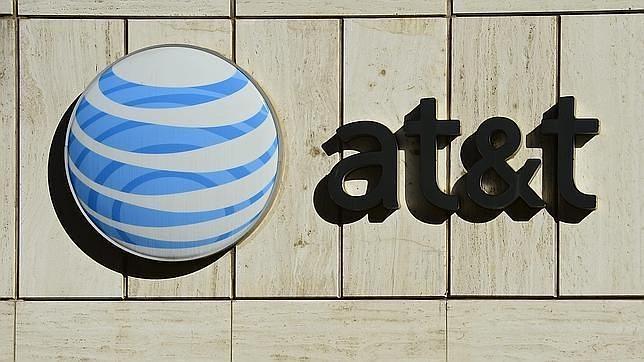Day 5/29/2014 – 3:25 a.m.
‘telcos’ absorb audiovisual profitable business for fiber and 4G creating a unique product

U.S. giant AT & T has bought the pay-TV operator Direct TV
Nobody seems willing to pay an internet connection to optical fiber 100 ‘megas’ speed just to check email. So while you are increasing the size of their fiber networks, cable and 4G absorbing their competitors, major mobile operators in the world s and have thrown for content distributors to feed these ultrafast networks. U.S. giant AT & T is buying Digital TV, second pay-TV operator American , of 36,500 million euros, and Comcast has 33,000 on the table to clinch Time Warner . Liberty Global acquired Virgin Media UK (17,000 million) and the Netherlands, Ziggo (10,000). Vodafone paid 7.700 million by most cable television company in Germany, Kabel, 7200 by the Spanish Ono, including your television. And Telefónica is closing the acquisition of Digital + 725 million. Pay TV’s another big business ‘telecom’.
The first fixed and mobile later, have reported substantial income to companies such as Movistar , Vodafone, Deutsche Telekom, AT & T and Verizon to throughout its history. “The problem is that the penetration of that business comes to a point at which it becomes slower and more difficult,” says Augusto Baena , partner at consultancy Oliver Wyman specializing in telecommunications. Ie manna from traditional services has been exhausted. To avoid further fall in margins, operators shall bill and retain more customers.
By packaging all services (fixed , mobile and internet ) in a single product, such as “Movistar Fusion ‘, companies have already taken a step in that direction. But when all offer that option with NGA and competitive prices , the following are adding new services to differentiate this “triple play.” And pay-TV has a huge selling point.
“It is becoming a central element of the strategy of many telemarketers,” says a study by the McKinsey consulting firm. “We are providing a new tool to increase revenue leveraging their existing customer base to generate additional sales and retain” he explains. The report notes that 60% of European users search and integrated service packages and consider the main television
. <- Here comes the story ad code ->
‘); }} Catch (err) {}
New habits
The change in consumer habits takes time anticipating this trend . New technologies have increased the number of available screens: laptops, tablets and smartphones (“smartphones”) have been relegated television to background
Young rarely see. TV crowding in the living room. While that device is dedicated in Spain an average 14.1 hours a week for video viewing, said mobile devices occupy 21.3 hours, according to a survey by Ericsson . It’s the end of the dictatorship of the grill TV. You want to watch your favorite shows when he decides not to schedule on a television. It is what is called video on demand. Even reduced discharges of series and movies: now seen in ‘streaming’
Behind these new uses is the extension of telecommunications networks ultrafast , both fixed and mobile, gan capacity, such as fiber, cable or 4G mobile, capable of transmitting audiovisual content heavy because of its higher quality. Companies have invested billions of euros in its deployment and now want them profitable. “That blocks ” premium “, such as HDTV, the best catalog of shows and movies and sporting events broadcast content” note from one of the major operators.
That interest to offer the best audiovisual content has sparked a war for broadcast rights. And media groups, including free TV, besides being limited technologically to meet the latest demand have reduced capacity programming expenditure. The ‘telco’, however, are loose financially. Telefónica, for example, has already made allowances for the Formula 1 , Moto GP, Tennis Tournament Roland Garros and qualifiers for the European Championship and the World Cup 2016 and 2018 respectively. And the recent closure of DTT thematic channels and produced content will not fit into the grid, which could move to pay-TV.
absorption Alongside companies also alliances are occurring. Netflix, the largest video store “online” world with 35.7 million subscribers , in April signed an agreement with the U.S. TV operators pay Atlantic Broadband, Grande Communications and RCN to integrate their application in Tivo TV platform, which Spain uses Ono. The company also is in talks for exclusive content Mexican Televisa and Comcast and Verizon will pay for their online content accessible faster. And Vodafone, after allying with Sky News and Spotify , you want to do with Netflix.
Spain, to the tail of Business
In Spain, Mediaset , which controls 22% of Digital + which is not held by Telefónica, aware of the promising future of the business of pay-TV, negotiates agreements with the company chaired by César Alierta. “Telefónica has networks Mediaset and funding and know-how in content and allowances that are now property” industry sources said, finally see that the Spanish pay-TV market can grow and generate income, after years of low profitability and loss of customers.
While in countries like Holland penetration of pay-TV is 100% of households , 90% in the U.S. and 60% in Germany, France and the UK, in Spain only reaches 24%. And with 3.7 million subscribers, 631,033 less than two years ago, the single European market together with Italy falling. Today only represents 6% of the turnover of the sector in Spain, but it believes offer the new scenario-with ultra-fast networks converged at more competitive prices and weak traditional TV – that our country will undertake and the first road pioneers always initiated by the United States and then in Europe.
No comments:
Post a Comment